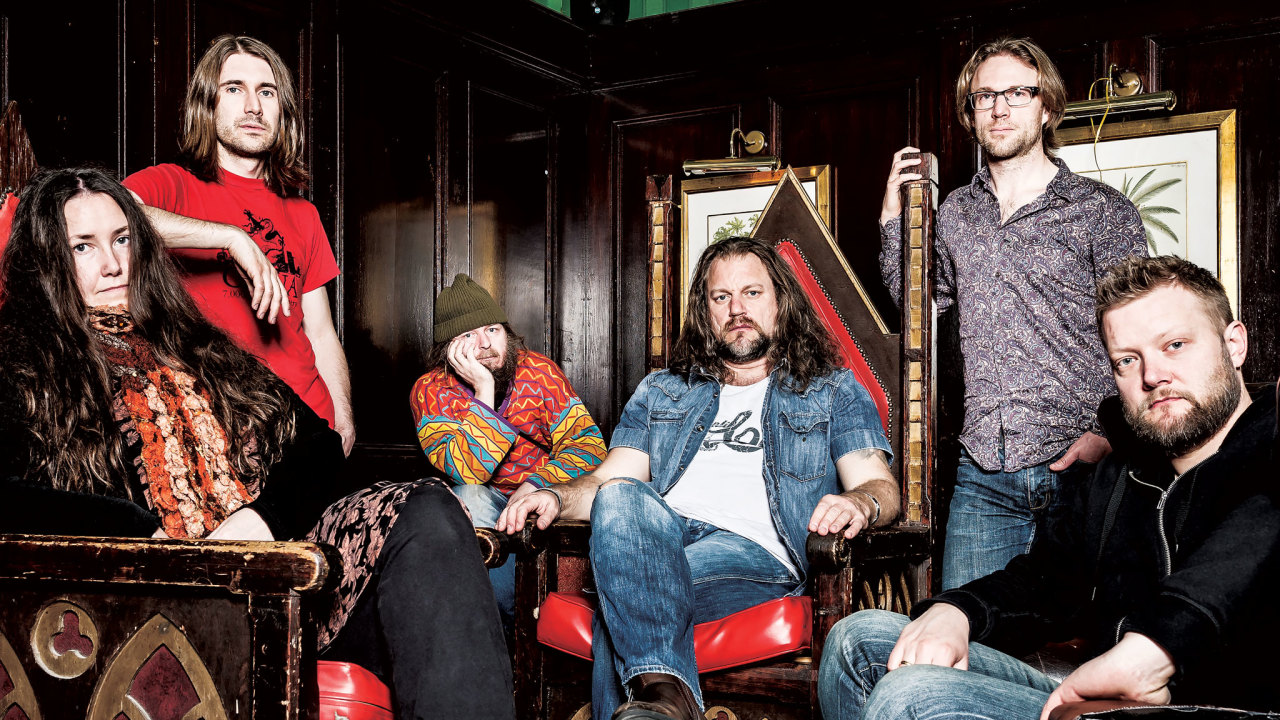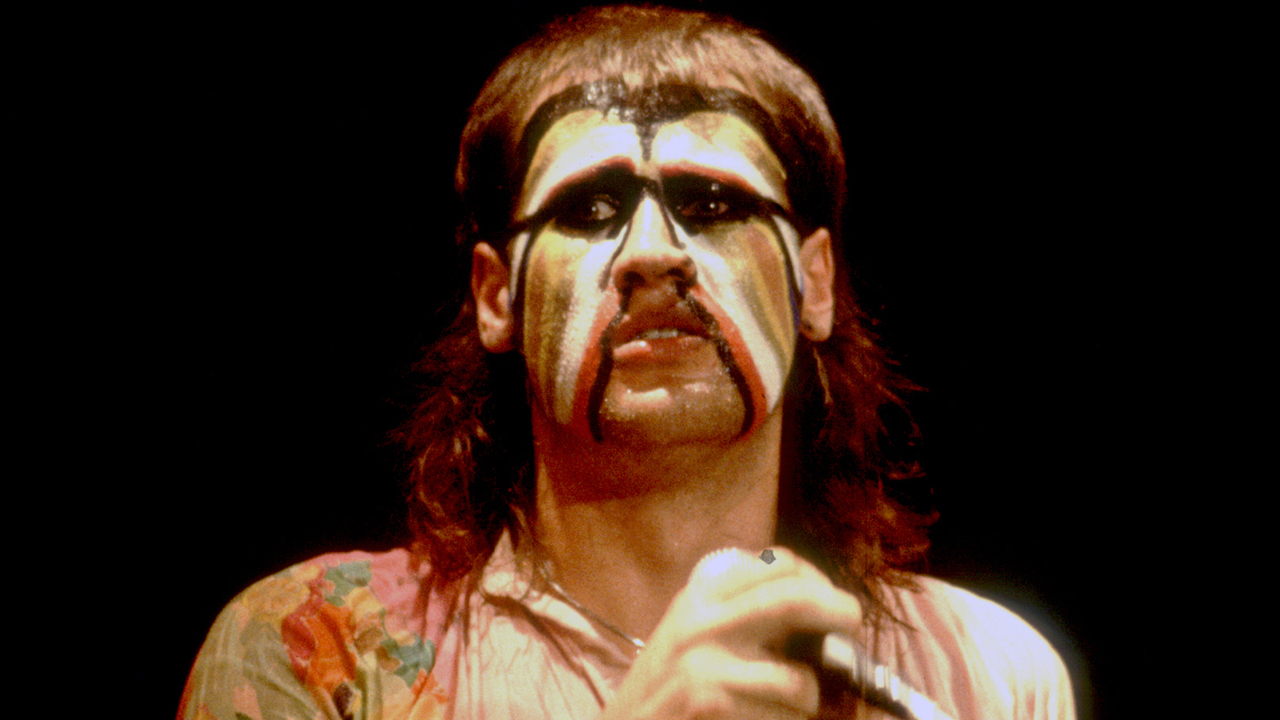Änglagård: Viking Saga
Swedish band Änglagård are the reclusive pioneers of modern prog. With just three albums in over two decades, theirs is an epic tale: fighting for the music they love, and fighting each other.

For many who worship at the altar of prog’s first wave, Änglagård are a contemporary band of almost mystical significance. A connoisseur’s choice when it comes to modern Swedish music, they were one of precious few bands extolling the prog code in the early 90s, arguably kick-starting a resurgence in interest in vintage sounds and wild experimentation that continues to blossom and expand today.
Their debut album Hybris emerged in 1992. An innocent but carefully crafted love letter to the early days of King Crimson and Yes, it was an enigmatic anomaly hurled into a largely indifferent lake of modernity… and yet, the ripples are still being felt on prog’s welcoming shore today.
The only problem with Änglagård, however, is that they are, compared to most of their peers at least, borderline recluses who have only managed to release three studio albums in the last 25 years. The gap between 1994’s Epilog and their most recent studio effort, Viljans Öga (2012), was a startling 18 years, which either suggests laziness or an almost insanely incremental gameplan.
There are many great prog bands from Sweden, but I don’t know another band that sounds like us.
The truth, however, becomes swiftly apparent when Prog speaks to three of Änglagård’s current six-piece line‑up via a crystal clear Skype signal. Drummer Erik Hammarström and founder members Johan Brand (bass) and Jonas Engdegård (guitar) are crowded together, looking distinctly awkward and uncomfortable. The body language is deafening. Somewhat disarmingly, Engdegård is happy to explain why his band have had such a sporadic story so far.
“The very short story is that this is a very unhappy marriage,” he states, with a wry half-smile. “We basically can’t live with each other, so we keep disbanding and separating after arguments and fights, but we still keep coming together and dream about doing something again.”
“Everyone in the band has a really strong vision, I guess,” adds Hammarström. “Sometimes we don’t all share the same vision. But we all have strong feelings.”
Sign up below to get the latest from Prog, plus exclusive special offers, direct to your inbox!
“That explains why we stick together for some years and then we separate,” shrugs Brand. “But these strong wills and these crazy people, that is Änglagård. We have a unique sound and that’s where it comes from.”
By no means the first band to report that friction has been an essential spur for creativity, Änglagård may have had a tough time getting to the end of each studio project or prolonged bout of touring, but the results are plain for all to see. The band’s current incarnation – which also features flautist Anna Holmgren, guitarist Tord Lindman and keyboardist Linus Kåse – has been far more prolific and busy than any previous line-up. A three-night run at Club Citta in Tokyo as main support to The Crimson ProjeKct and a slot at fellow countryman Mikael Åkerfeldt’s curated stage at Roadburn in 2014 are among their most recent achievements. But just over 20 years ago, Änglagård began life regarding themselves as a lone voice, howling amid a barren prog wilderness.

“It was an all-time low for progressive rock in the early 90s,” remembers Hammarström. “Almost nothing existed. Maybe we’re flattering ourselves, but it wasn’t very hard to be the best progressive rock band at the time. It was totally dead in Sweden.
“Normally you become a punk rocker and you want to speak out and scare your grandmother, but for me, I have two older sisters and I grew up with this kind of music and all the great bands from the 70s, so it was normal to continue in this kind of music. Progressive rock can be a rebellion thing too, I think.”
“We were big fans of progressive music and we were celebrating the genre because we loved the music so much,” Brand recalls. “If you listen to the first album, Hybris, it’s a little attempt to celebrate the genre in our own way and with some Swedish folk influences, and a mixture of our personalities. It was never just about repeating the past.”
“Many people mix it in the wrong way,” Engdegård interjects. “We love to use vintage instruments but especially now, today, I think we create progress in music. We’re pushing the limits. We don’t write typical 70s progressive rock. But I think some people hear that we play mellotrons and Rickenbackers and we have the old sounds, therefore they think we’re playing retro music. We think we are a band that really plays progressive rock in the true sense, and we’re taking it to a higher level.”
Despite the 18-year gap between their second and third albums, it’s not hard to see the red line that runs through the Änglagård catalogue, and how Viljans Öga represented the culmination of two decades of evolution and turbulence. A staggering four-song work that vividly recalls the very best of the original 70s prog era while sounding quite unlike anything that was around back then – or anything from today, for that matter – Viljans Öga is clearly a labour of love and, given the fractious relationships these devoted musicians share, another potential minefield designed to test Änglagård’s collective resolve.
“That record was a huge effort to make,” nods Engdegård. “Then we did five shows or so, in the United States, France, Belgium, Portugal and Sweden. Then we kinda crashed again and said, ‘Never again!’ [Laughs.] Some of the band wanted to continue touring, so then there was a little change in line‑up. They brought Linus on keyboards and Erik on drums and continued for two years without me.”
“We were tired, all of us,” adds Brand. “We had some serious problems with our drummer. Jonas took a break and me and Anna wanted to continue, but we couldn’t move forward with the drummer. So we had to find a new drummer and, when our keyboard player decided he didn’t want to play live, a new keyboard player too.”
“We all met up a few times and were jamming a lot and testing new stuff, and then this opportunity to play in Japan came up,” says Hammarström. “We were asked to go over and play for three nights with The Crimson ProjeKct in Tokyo. I’d never been to Japan before, so it was, ‘Go for it!’ and that was the beginning of the quintet version of Änglagård. That really took off and we played some really good shows in Mexico, Germany and Poland. Right from the beginning, this band had really strong potential. We all like good music and people are really friendly, but they’re uncompromising. It’s not like an ordinary band.”
Maybe we’re flattering ourselves, but it wasn’t very hard to be the best progressive rock band at the time.
Speaking to this trio of driven artists, it’s very apparent that what propels the Änglagård ship forward is an obsession with the music itself. The creative process and the opportunity to see wild ideas brought to life transcends any petty squabbles the individual musicians may have (or have had) with each other over the years.
Like their Swedish brethren in Opeth and Anekdoten, Änglagård have been doing this long enough to view the popularity of prog in 2015 as evidence that they were right all along and that the timeless nature of truly creative music will sustain both their careers and their own interest in pushing their own sound forward with dogged determination. More than any other band from the icy north, however, Änglagård could be forgiven for regarding themselves as godfathers of a home-grown scene that has grown from nothing to something quite extraordinarily fertile.
“I don’t know about that, but I think that Änglagård’s sound is really unique,” Engdegård replies, a little reluctant to toot his own horn. “There are many great prog bands from Sweden, but I don’t know another band that sounds like us. I think there is this little spot for us. I think that many fans think so too.”
“The progressive genre is much bigger now, of course,” says Brand. “The international community is much bigger now too, thanks to the internet era. It’s much easier these days. Everything is going faster. It’s fantastic having Facebook and all those things. We’re quite happy to be doing this in the modern age.”
At this moment in time, there seems to be every chance that Änglagård will either march on to numerous fresh triumphs or disintegrate amid a melee of acrimonious frustration. Perhaps that knife’s-edge existence is what they need to fully engage with the magic that thrums at the heart of the Swedes’ thrillingly idiosyncratic sound.
With writing well underway for Viljans Öga’s long-awaited follow-up, plans to release a live DVD in the near future and a spot booked on Cruise To The Edge this coming November, it seems that harmony is the current state within the Änglagård camp. If we generously assume, then, that all potential interpersonal disasters are likely to be averted, what can we expect from the band’s fourth album when it eventually arrives?
“It’s very hard to predict with us!” chuckles Engdegård.
“Everyone in Änglagård is writing music now… and very interesting music!” declares Brand with a broad grin. “We have a lot of ideas. I think it’s going to be a very interesting album with a lot of energy. Maybe we will do a triple album! Every member of the band gets one side of the album, so I get my own side for my own song and all the other members can contribute and add their feelings and special sounds. Like a concept album…”
“With six producers,” Engdegård adds with a smile. “But never all at the same time!”
Cruise To The Edge takes place from November 15-19. For more information, see http://www.cruisetotheedge.com. For more on the band, see http://www.anglagardrecords.com.

Dom Lawson has been writing for Metal Hammer and Prog for over 14 years and is extremely fond of heavy metal, progressive rock, coffee and snooker. He also contributes to The Guardian, Classic Rock, Bravewords and Blabbermouth and has previously written for Kerrang! magazine in the mid-2000s.
